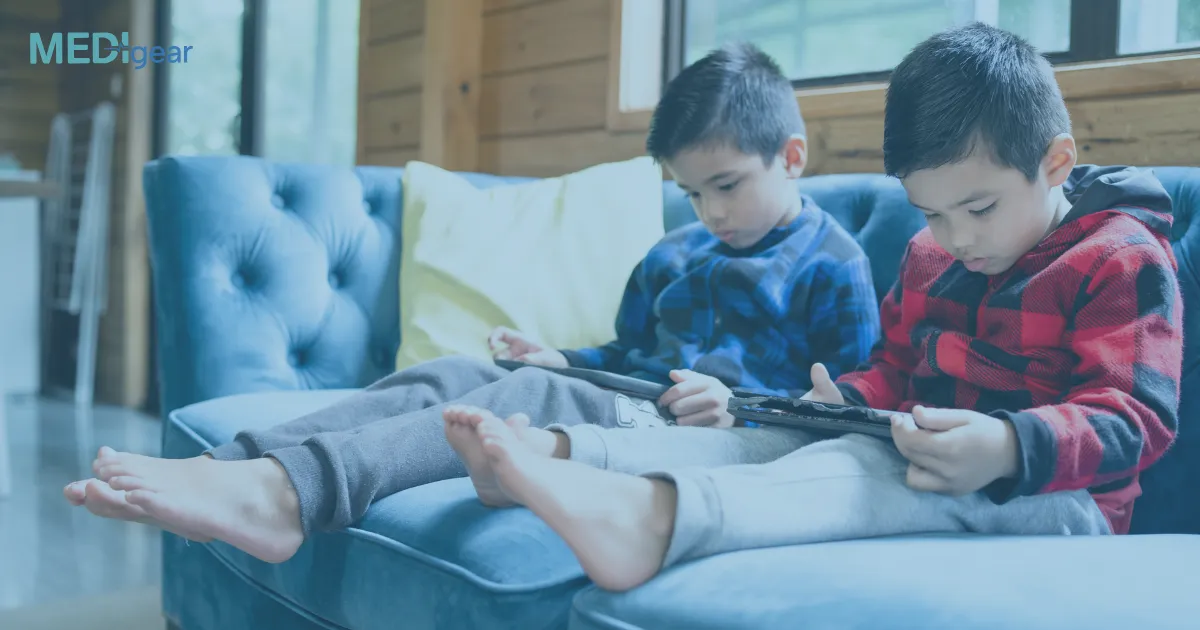In today's digital age, screens are integral to learning, entertainment, and social connections. Yet, prolonged screen exposure raises valid concerns about children's eye health and development. Striking a balance between digital use and healthy vision habits is essential.
1. Recommended Screen Time by Age
Authoritative guidelines help parents navigate healthy screen use:
- Under 18 months: Avoid screens, except for video chat with caregivers.
- 18 to 24 months: Introduce only high-quality educational content, with parental involvement.
- 2 to 5 years: Limit daily screen time to 1 hour of supervised, educational content.
- 6 years and above: Encourage healthy habits with consistent limits—ideally keeping recreational screen time under 2 hours daily.
2. Vision Risks from Excessive Screen Use
Extended screen exposure in children can lead to:
- Digital eye strain (Computer Vision Syndrome): Symptoms include dry eyes, blurred vision, headaches, fatigue, and neck or shoulder discomfort.
- Myopia (nearsightedness): Growing screen use is linked to myopia progression, especially when coupled with less outdoor time.
- Blue light exposure: May disrupt sleep patterns and circadian rhythms in children, impacting rest and eye comfort.
3. Effective Strategies for Eye Protection
To safeguard children’s eyes, consider adopting these smart habits:
- The 20-20-20 rule: Every 20 minutes, encourage children to look at something 20 feet away for 20 seconds—a simple but powerful way to reduce eye strain.
- Maintain proper posture & screen setup: Position screens at a comfortable arm’s length and slightly below eye level; ensure the environment has balanced lighting.
- Promote outdoor play: At least 1–2 hours daily outdoors helps slow down myopia development by giving the eyes varied focal distances.
- Limit screens before bedtime: Avoid screen use at least 1 hour before sleep to protect circadian rhythm and sleep quality.
- Use blue light filters or glasses: While evidence is mixed, they may offer some relief—especially during evening screen use.
4. Beyond Vision: Screen Time’s Broader Impact
Excessive screen use may also contribute to:
- Cognitive and developmental delays: Especially in children under 4, impacting language, attention, and self-regulation skills.
- Mental health challenges: Over 4 hours of daily screen time is linked to higher levels of anxiety, depression, behavioral issues, and ADHD—often mediated by reduced physical activity and disrupted bedtime routines.
5. Creating a Balanced Digital Routine
Aim for a holistic, mindful approach:
- Establish screen-free zones like bedtime, meals, and family time.
- Co-view and discuss content with your child to enhance understanding and critical thinking.
- Encourage creative, non-screen activities—arts, reading, games, or outdoor adventures.
- Model balanced screen habits yourself to set a positive example.
Conclusion
While screens are omnipresent in modern life, limiting recreational usage to age-appropriate durations—and balancing with strategies like the 20-20-20 rule, good posture, outdoor time, and mindful content—can protect children’s eyes and overall well-being. Regular eye checkups and attentive routines go a long way toward preserving their visual health as they grow.
Disclaimer
This blog is for informational purposes only and does not replace professional medical, ophthalmological, or pediatric advice. If you have concerns about your child’s vision or screen habits, please consult a qualified healthcare provider.
References
- American Academy of Pediatrics (AAP) screen time guidelines and media use recommendations
- World Health Organization (WHO) recommendations for screen exposure
- All About Vision – Impacts of screen time on eye health
- Optometrists' Clinic – Screen time guidelines and vision risks






